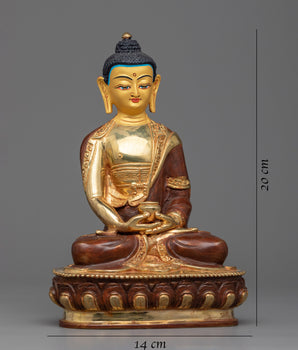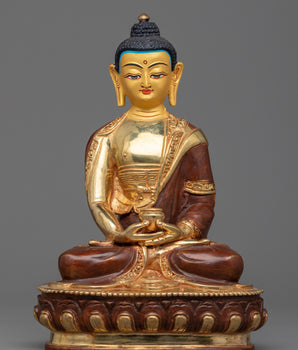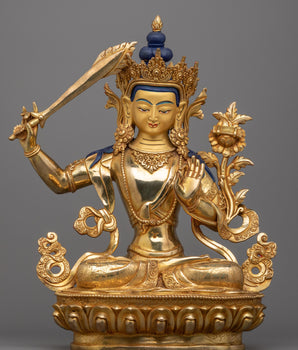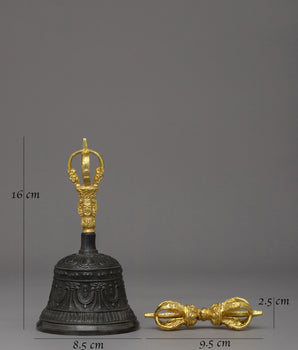









Handcrafted Dipankara Buddha in Oxidized Copper | Buddha Figure for Meditation

100% AUTHENTIC

HANDMADE

FREE SHIPPING
Dipankara Buddha in Oxidized Copper | Ideal for Altar, Yoga Space
------------------------------------------------------------------
Size: 4.9”/12.5cm (Height) x 2”/5cm (Base)
Weight: 0.25 kg
Material: Oxidized Copper Body
------------------------------------------------------------------
About Our Statue
This 4.9" Dipankara Buddha in Oxidized Copper is made of oxidized copper, which has an old, timeless appearance. Dipankara, one of the oldest Buddhas, stands elegantly on a lotus pedestal, offering a gesture of promise and enlightenment, representing the light that inspired Shakyamuni Buddha's journey.
This lightweight and sacred figure is perfect for travel altars, home meditation corners, or as a thoughtful spiritual present. Despite its size, it radiates calm knowledge and historical depth, offering a serene feeling of presence in every setting.
Dipankara Buddha, known as the Buddha of Light, is revered in Mahayana Buddhism for his ability to illuminate the path to enlightenment. He is believed to have met Sakyamuni Buddha in a past life, offering his light and wisdom. Dipankara Buddha is also associated with spiritual transformation and guidance, and his image serves as a reminder of the boundless light that can help overcome the darkness of ignorance. This statue represents the compassionate power of light and the spiritual awakening that is possible through Buddha’s teachings.
Introduction To Dipankara Buddha :
Dipankara is a historical Buddha, supposed to have lived on Earth for a hundred thousand years. The number of Buddhas that have existed in theory is tremendous, and they are sometimes referred to as "Thousand Buddhas." Each was responsible for a life cycle. According to certain Buddhist sources, Dipankara (also Dipamkara) was a Buddha who attained enlightenment eons before Gautama. Dipankara is usually shown as a seated Buddha, but standing Buddhas are widespread in China, Thailand, and Nepal; he usually forms a protective mudra (Abhaya mudra) with his right hand, but he sometimes makes it with both hands.
How do you take care of your statues?
• Place them at room temperature, avoiding direct sunlight.
• Make sure that the area where your statue is placed is entirely free of moisture and dust.
• Place it at the highest place on your altar after being consecrated by a Lama/monks. The best practice is to keep them covered inside a glass cabinet.
• Do not use your bare hands or any objects with a rough surface to wipe the face.
• Directly touching objects with the bare hand can smudge the face, leaving scratches.




















